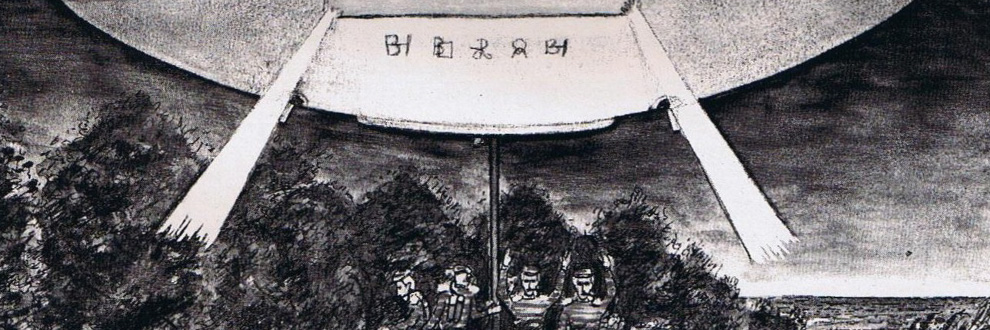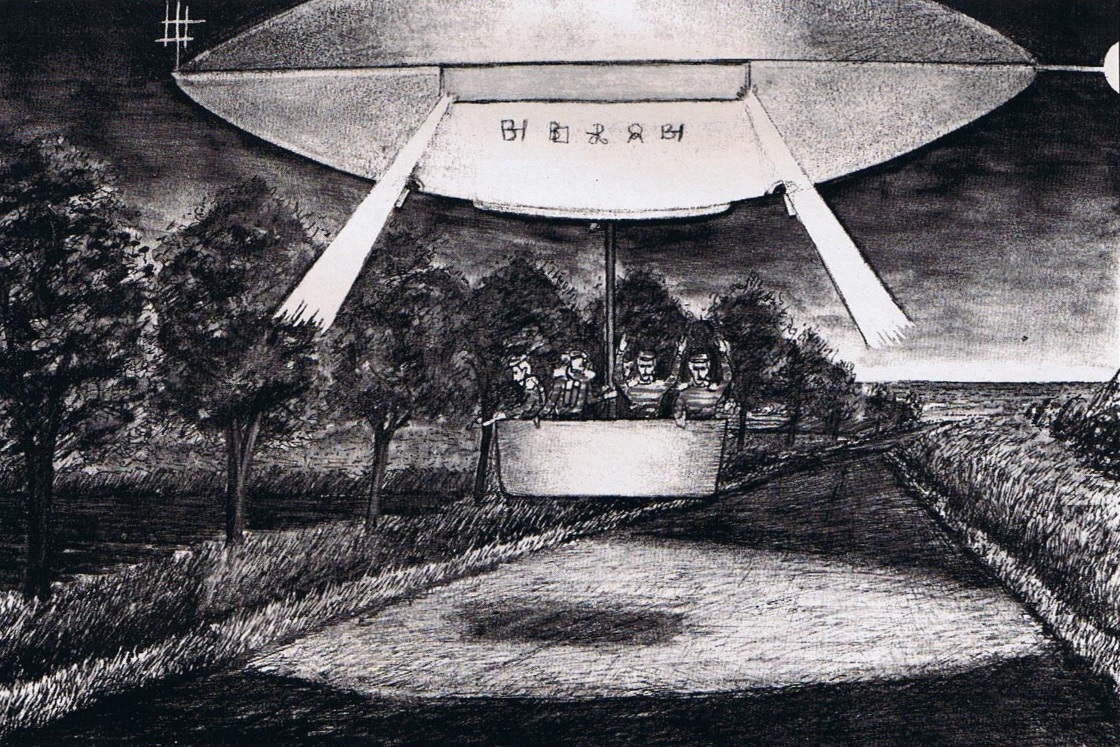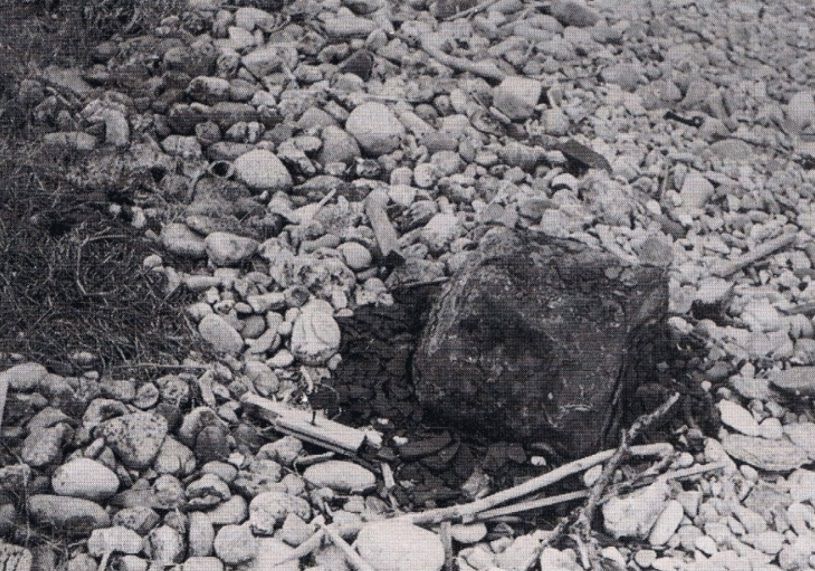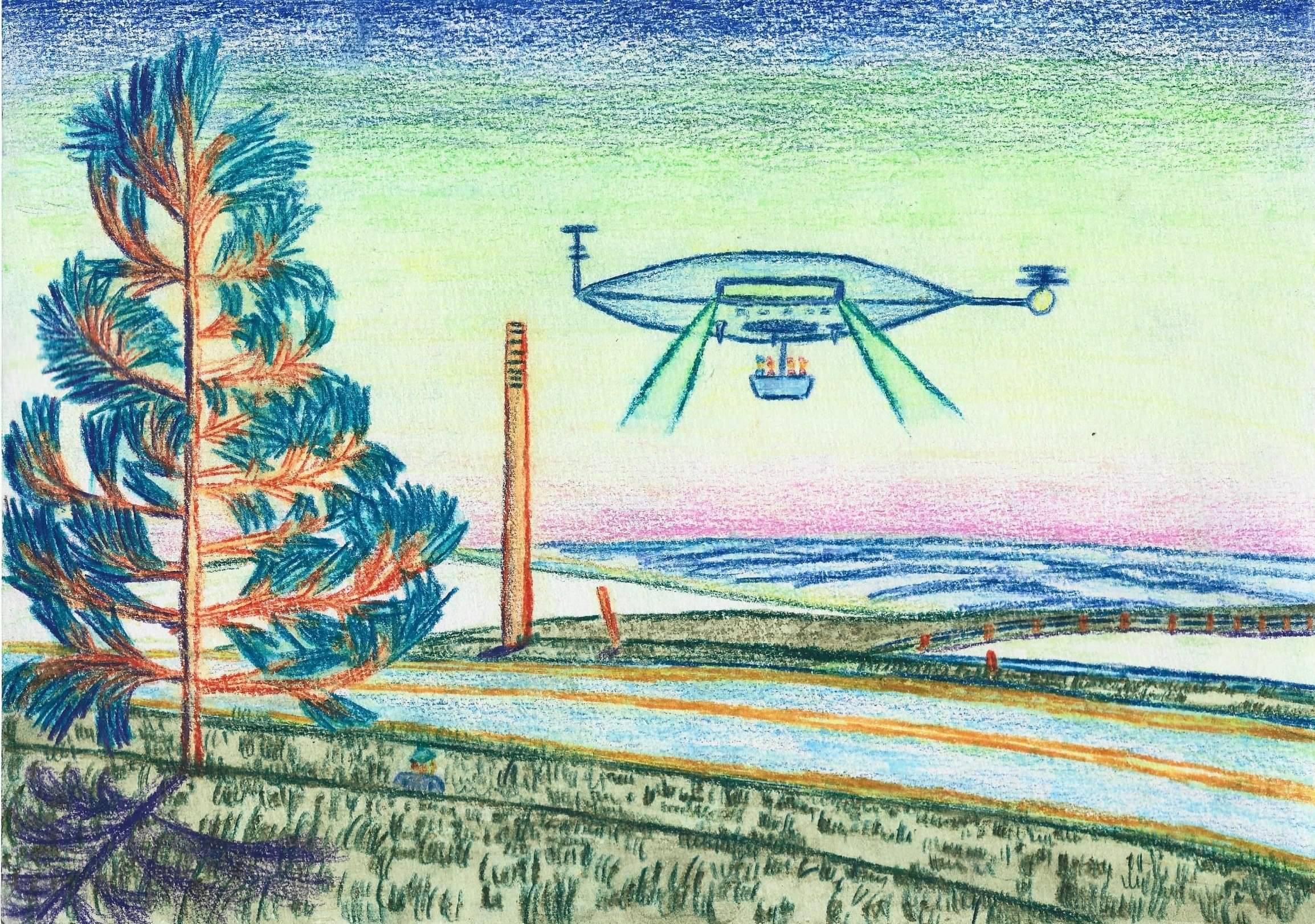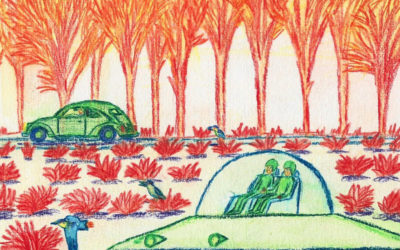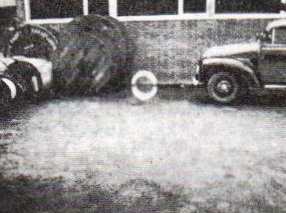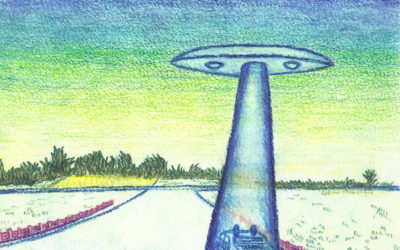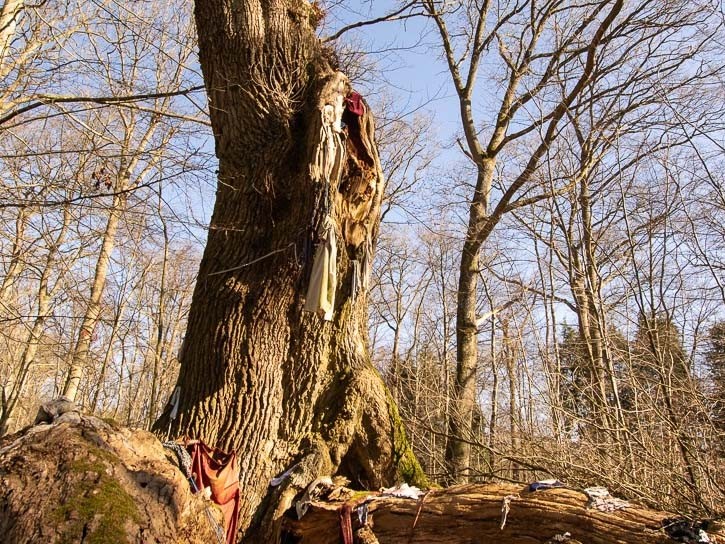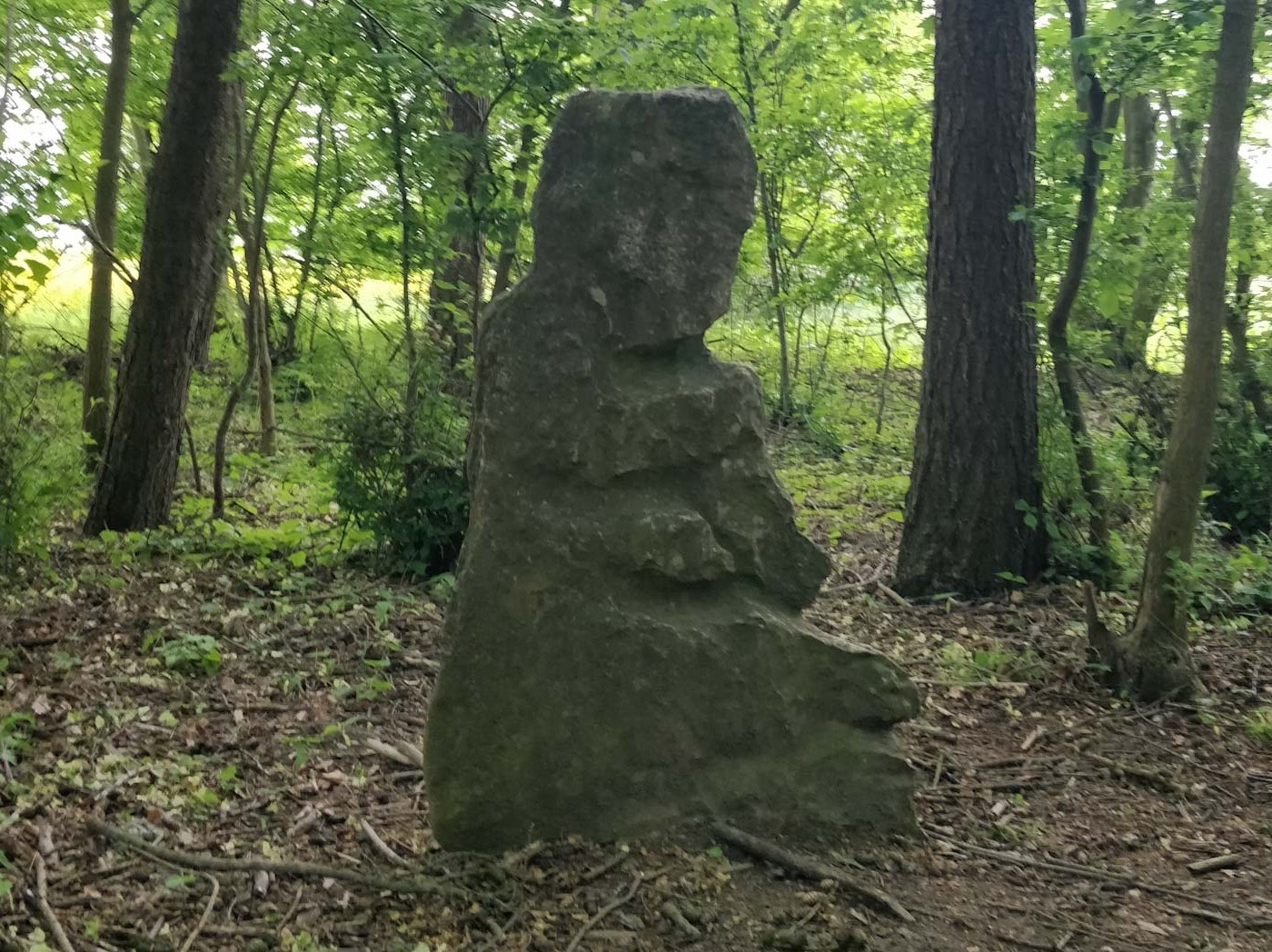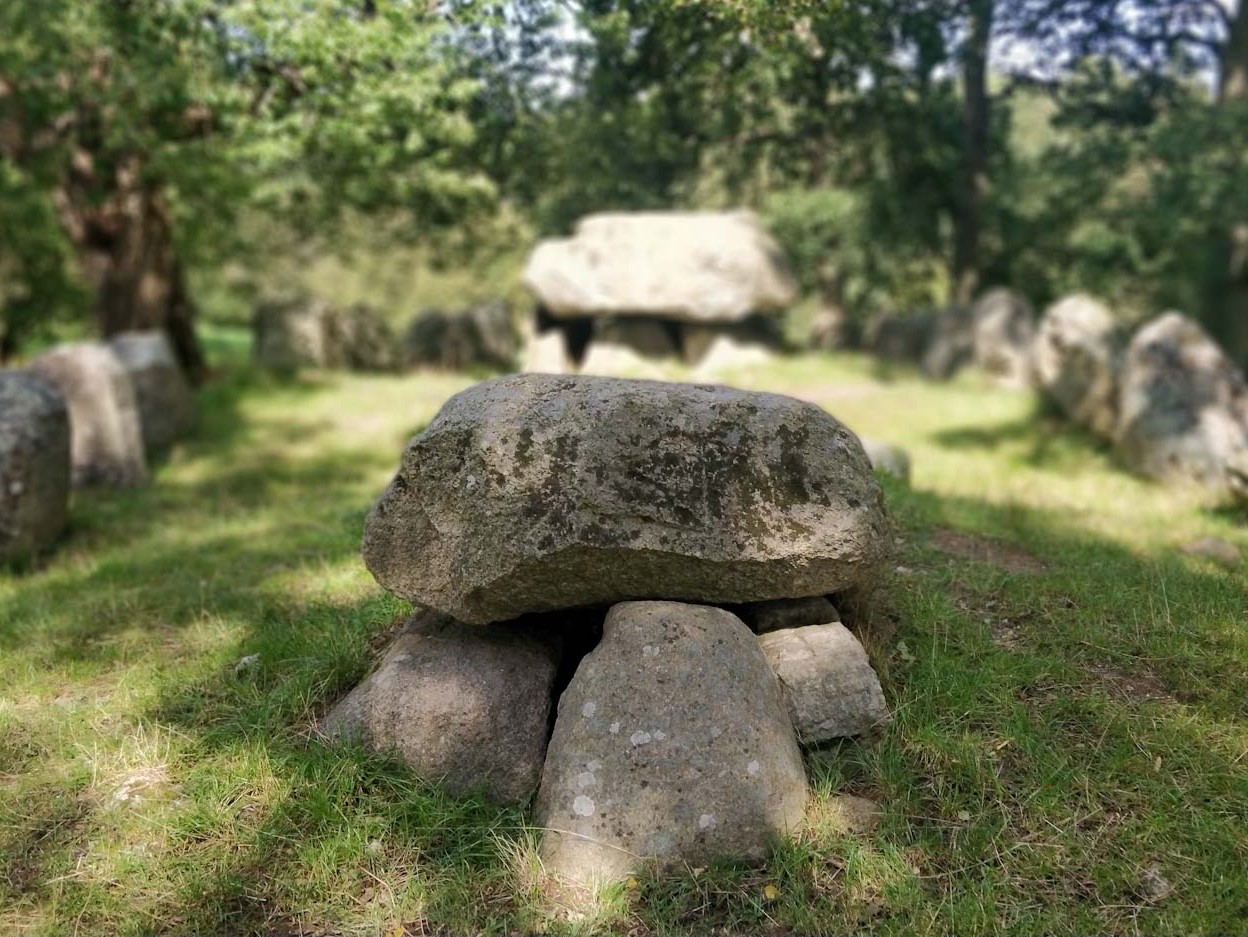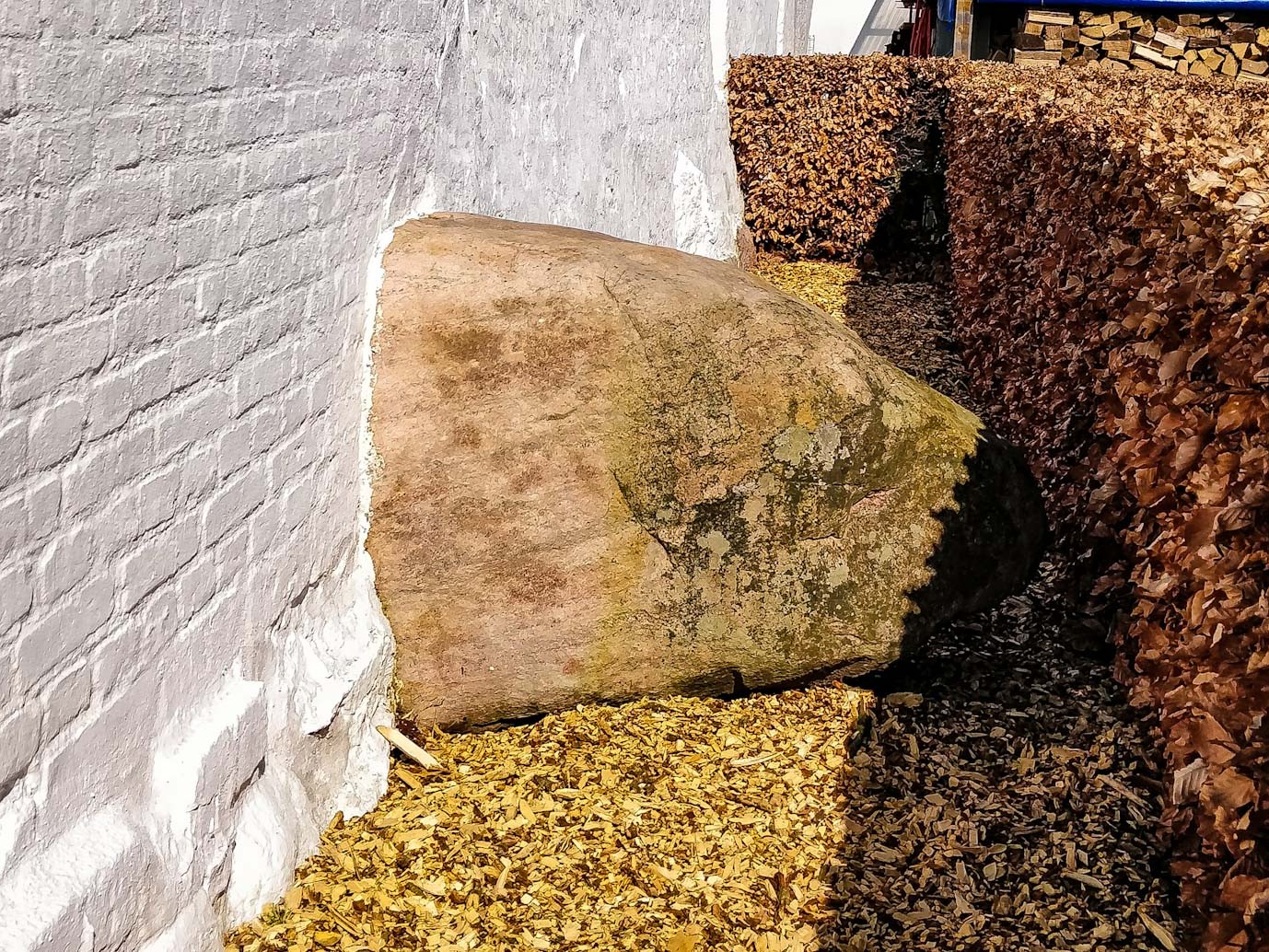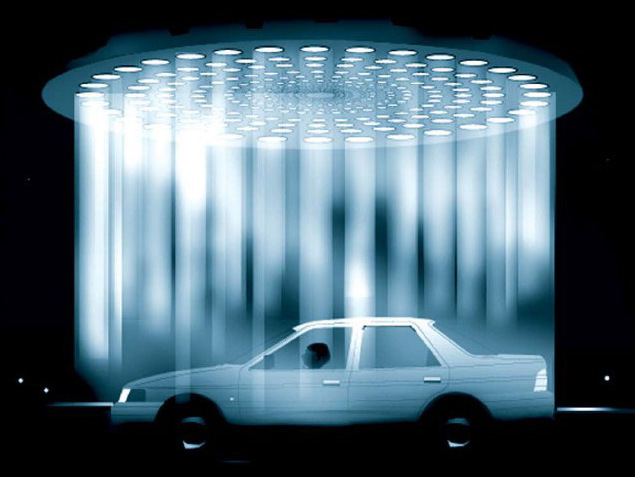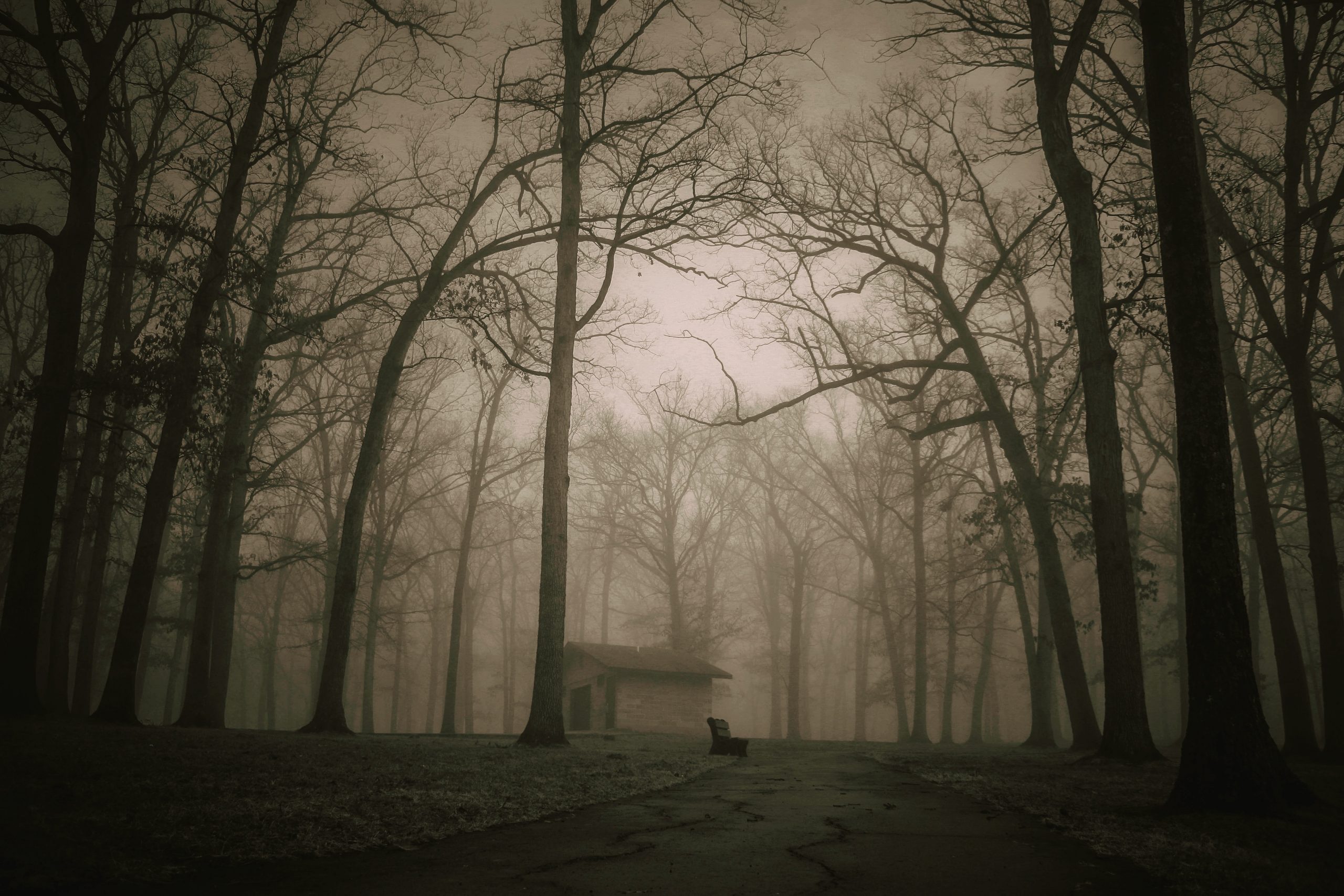When: January 18, 1967, from about 16:40 to 16:45 o’clock
Where: Overby, Sjællands Odde (ca. 55.9595, 11.41232)
Investigator: Erling Jensen, Kim Møller Hansen
The Experience
The Sjællands Odde incident happened on the 18th of January, 1967, and involved two young boys: Tage Jensen and Jesper Andersen, respectively 9 and 7 years old at the time. Jesper lived in the village of Overby, on a farm near the road leading from Nykøbing Sjælland to the tip of Sjællands Odde (“The Edge Of Zealand”). The farm had a clear view of the sea on the other side of the road. That day the neighbour’s son, Tage, was visiting along with his 4-year old, younger sister. The weather was cold and misty, with a strong wind blowing from the west.
Around 16:45 after duskfall, the boys were playing near a large bale of hay. Tage was just about to head home, when he saw a dark grey object in the sky. The object had a blurry round shape with a short, tapering tail.
Tage became frightened. At first, he thought the thing was a waterspout. In fear he yelled out to Jesper and his younger sister, who was nearby, that it was dangerous and that they had to flee. Tage and his sister then ran home to their mother to warn her. Mrs. Jensens immediate reaction was that the wind was not nearly strong enough for a waterspout to form in the first place. She then went over to the window, but could not see anything unusual in the sky. Tage was also surprised that a waterspout could be so small, but then again he had never seen one before.
Jesper, on the other hand, was not afraid. He instead took cover in a roadside ditch and observed the further flight of the “cloud”, which at this point had transformed into a dark, round ball but without the previous “tail”. It now also had a glowing corona of light and it projected two searchlight-like beams of light that cut off mid-air.
The further “transformation cycle” of the UFO is not completely clear, but after moving around the immediate area for a while, the corona eventually disappeared, and it gradually came to look more like a classic flying saucer-type craft. The UFO was orange in colour with a long, narrow, rectangular window in the middle, a beam of bluish-green light descending from each corner of the window. The object had elaborate antennae attached to, and so did the front end of the saucer itself. The bottom of the UFO furthermore had a square door surrounded by glass. Jesper saw two rows of strange symbols on the flying saucer, that did not fit with any numbers and letters he had learned in school. Behind the fuselage of the UFO trailed a small round object on a wire, that Jesper compared to a round cheese on a string of rope. Most bizarrely, on the other side of the UFO there was a poster depicting – in Jespers own words – “a negro”, wearing a basket on his head!
Jesper’s account of the UFO’s flight pattern describes the object descending as it continued flying from east to the west, then making an abrupt turn towards the observation site before making another sharp turn towards a small hill behind the house where Tage’s parents lived. Jesper noticed that the UFO flew in a weird wobbling manner, as if the pilot had difficulty controlling the craft, and would continue doing so throughout the entire sighting. Three landing legs then descended from the bottom of the UFO, as if it was about to land. However, when the UFO was hovering just a meter above the ground, it pulled up the three legs again, but not completely – just so that the landing legs’ tips were still visible throughout the rest of the sighting.
Next, the UFO flew to the northwest, heading towards the sea. When it was over the beach, something strange happened. A black substance fell out of the UFO. Then the object took a drastic turn, while at the same time a square gondola or basket was lowered down towards the ground. It was hanging in a thick and supposedly very rigid cable, as it did not swing no matter what maneuvers the UFO made.
Next, eight “crew members” climbed down through the hole in the bottom of the UFO, one by one and into the basket. Jesper described the crew as small people, who looked human but were all between 1-1.2 meters in height, around the same size as Jesper himself. They all had long thin faces with long noses. Seven of the crew had cropped blond hair, with the eighth crew member having longer and darker, shoulder-length hair. Jesper remembered that one of the crew members – perhaps the leader – wore a blue uniform, but the other seven were wearing clothes with vertical stripes in red, white and blue – similar in design to the unitards worn by gymnasts or the suits that babies wear. Additionally, all eight wore caps like those worn by stonemasons. Except for the commander in blue, each carried a double oxygen tank on their back that had what looked like breathing apparatuses attached. From here ran a hose that connected on the opposite end to a grid-like contraption covering the crew members’ mouths, the same way as with deep sea divers. The crew also had a flashlight-like type projector fixed to each of their shoulders.
The UFO eventually flew back from near the sea towards the area where Jesper was hiding. The eight crew members then picked up some devices that were laying in the basket, which Jesper described as looking like binoculars or cameras. Jesper was not frightened at all and described the crew as not just looking friendly, but also waving goodbye to him when the UFO passed over a formation of trees on the side of the road. By then, Jesper could hear the UFO making a low noise similar to that made by a battery powered tape recorder. Jesper noticed that the UFO produced no heat signature like a low flying aircraft or helicopter usually would.
When the UFO continued its flight in the direction that would have brought it over the church in Overby, Jesper noticed seven of the eight crew members climbing up from the basket into the craft itself. Towards the end of the sighting, the UFO changed color from orange to purple but the light from its window stayed bluish green. The observation lasted no longer than five minutes and was over by 16:45.
Aftermath and Investigation
Initially when hearing their son’s story, Jesper’s parents were skeptical. But neither he nor Tage were known for telling lies. Jesper’s father, who was the director of the local airborne civil defense unit, showed Jesper photographs of all the aircraft and helicopters in service at the time. Jesper was certain that he had seen something completely different. Also, Jesper was familiar with different aircraft operated by the Danish military thanks to their frequent drills over the nearby Gniben area. His mother finally contacted the Rude Skov satellite tracking station, who put her into contact with SUFOI.
A few weeks later, Erling Jensen, who at the time was the director of SUFOI’s report central, went to Overby to interview the young witnesses. Jensen’s impression of boys was very positive – he did not believe they were lying about their experience. They stuck to the overall story they had originally told their parents, while Jensen managed to get even more details from them in the interview, more or less all of which have been related above. Jensen noted that these details fit remarkably well with other CE3 accounts from around the world at the time, which was made all the more intriguing since he determined that the family members had no knowledge of, or interest in, UFOs whatsoever. It would therefore seem that this experience was “uncontaminated” and had happened independently of any influence.
Most of all, Jesper seemed worried about not being believed, and declared his sincere wishes for the spaceship and its crew to visit again so that his father – and especially his grandfather, who had teased him about it – could be convinced. Erling Jensen did press Jesper on some of the more bizarre details of the sighting, such as the poster of the African with a basket on his head, but the boy insisted that this was what he had seen. When SUFOI contacted the Andersen family again in 1983, Jesper’s mother affirmed that his son, now 24 years old, still believed in the truth of his observation. He was also happy to help spread the word about the existence of UFO’s, although he now felt that the story should be left as it was. Jesper’s mother admitted that she had since become more to the possibility of extraterrestrial visitation and furthermore had had several UFO sightings on her own.
Finally, about that strange “something” that Jesper saw fall from the UFO near the sea? About a month after the observation, a 50 kg heavy lump of solid but somewhat damp black material was found on the nearby beach. The black lump was sent to the Danish Mineralogical and Technological Institutes for analysis. The results found that the material was nothing more exotic than artificial fertilizer made from calcium and nitrogen. It turned out that it had long ago been dumped by a resident of the neighborhood after the fertilizer had become too hard to use. In other words, the lump had nothing to do with the UFO sighting whatsoever.
Commentary
The Sjællands Odde case has almost all the hallmarks of a stereotypical 1950s/1960s CE3: A flying saucer-type craft, carrying what seems to be human-like aliens in uniforms, with odd devices and symbols in an unknown alphabet. Is this Denmark’s best example of an encounter with extraterrestrials, or an elaborate children’s fantasy?
One might think that with a subject as fantastic as UFO’s, children make up for a sizable amount of reports, but actually the percentage is quite low. A French survey of UFO close encounter cases in the period 1954-1967 found that children only made up for about 3% of the total witness mass. Likewise, very few reported cases from Denmark have children among the observers. An important factor to consider here though, is of course how many parents take stories of children’s observations seriously enough to report them to official instances. There may be quite a large percentage of unreported sightings involving children, but one can imagine that even most of those that are actually believed by parents never get reported further, out of fear of ridicule.
In any case, one would think that UFO sightings by children show a much more immature quality than those of adults. But this is also not strictly true. In fact, the Sjællands Odde case demonstrates pretty much the same dream-like surrealistic quality as so many other CE3 “landing” cases. If one should point to the most remarkable difference that sets Jespers sighting somewhat apart, it is more in a qualitative sense, due to the astonishing amount of details given. There are a few points of contention though: Jespers account really does seem like a mashup of different and conflicting impressions and influences. The poster depicting the African with a basket on his head is the most striking example, in the sense of how completely irrational it seems. But also the craft itself seems more like a hybrid of a hot air balloon, an airship, and a saucer, and the crew are also strangely mixed up of many different elements. If one looked deeper into popular children’s literature etc. from the period, one could probably find the source for many of these, seemingly random, details.
Does this mean that Jesper was imagining things? Some of it, perhaps, but probably not all. The intitial, strange cloud that both he and Tage (and possibly Tage’s little sister) saw, was quite possibly real enough to take a photo of. In fact it sounds a lot like one of Terence Meaden’s ionized plasma vortexes, a (hypothetical) exotic weather phenomenon that in the 1990’s were seen linked with crop circles in the UK. These vortexes have been observed by witnesses and are known to glow and change shape, even sometimes “shed” parts of themselves, resulting in what would look like a falling substance. Some link has also been established between the electromagnetic fields these vortexes can create and cognitive changes, sometimes leading to hallucinative effects in observers. We still do not know that much about what happens in these cases, but several studies and experiments point towards electric stimulation of the brain (temporal lobe) under the right circumstances being able to bring about lifelike visions and feelings of an otherworldly “presence”. The takeaway point of this is, that the strange cloud itself might have been a source – or trigger – of Jespers further sighting. But at just what point Jespers experience transformed from observing something tangible into a more dream-like or visionary “overlap”, is hard to say.
It does seem a bit odd that Jesper, after being contacted by SUFOI again in 1983, didn’t seem to want to investigate the case further. There can be many personal reasons for this, though, that in no way means that he was trying to prevent closer scrutiny about what actually happened. All in all, The Sjællands Odde case is at the same time both very typical and very unique for CE3 cases, most definitely deserving an important place in the annals of Danish ufology.
Sources
- Aarhus Stiftstidende, May 18th (1967)
-
Holbæk Amts Venstreblad, April 15th (1967)
-
Holbæk Amts Venstreblad, June 15th (1967)
-
Jydske Tidende, April 16th (1967)
- UFO-Nyt: #2 & 3 (1967), #1 (1984)
- Willy Wegner – UFO-Landinger i Danmark
Tags
In the same category…
The Store Vildmose CE3
One late autumn evening in 1957, a farm owner and his wife were driving through the Store Vildmose area, when they observed a strange looking craft.
Soap Bubble UFO’s
During the 1960’s and 1970’s it appeared as if Denmark was being visited by seemingly sentient, soap bubble-like objects. What were these strange bubbles, and what happened to them?
The Evald Maarup Case
The 1970 incident involving police officer Evald Maarup is considered one of the most credible, unexplained UFO cases from Denmark. It gained a lot of publicity both at home and abroad, with journalists as far away as Ghana wanting to cover the story.

